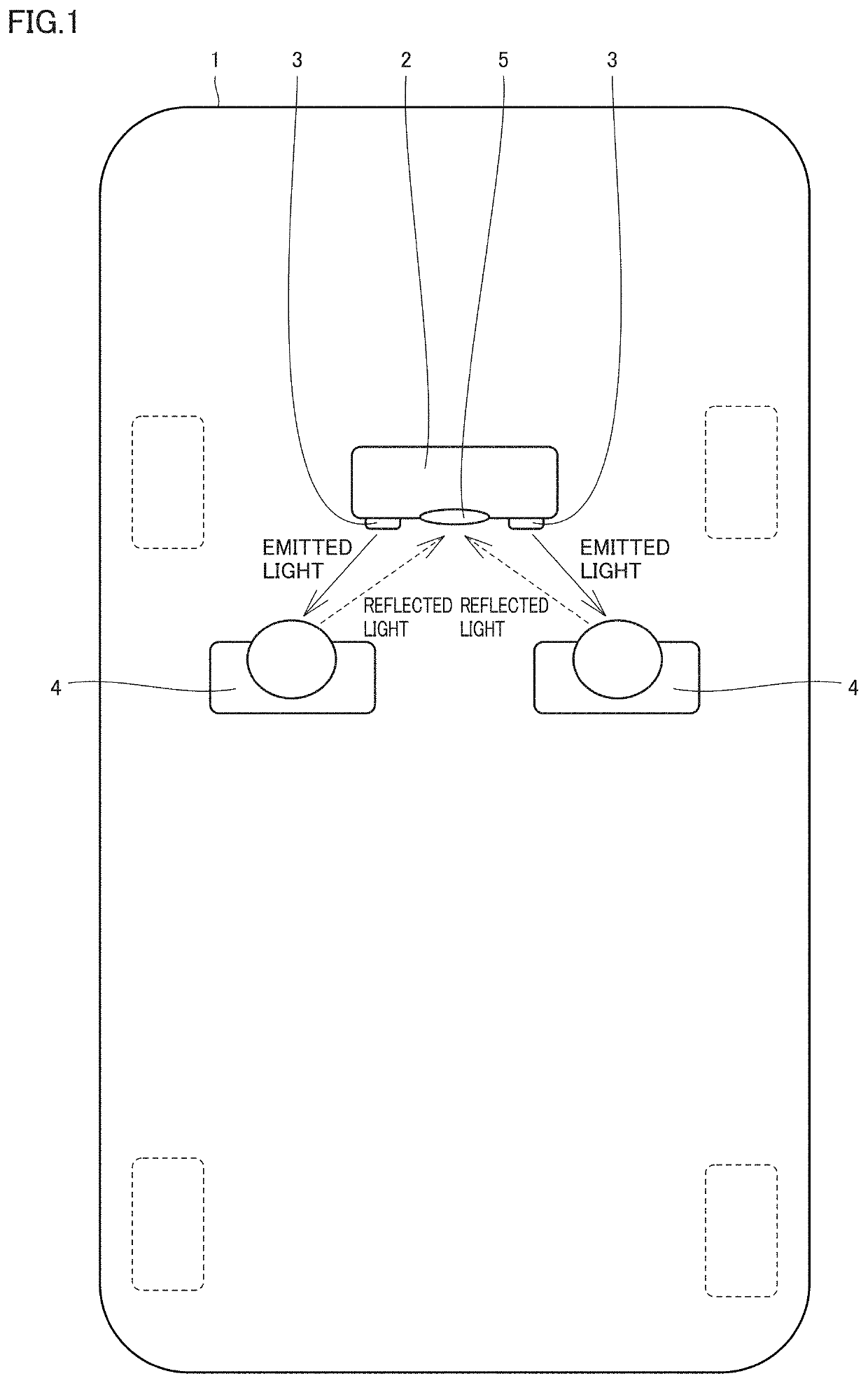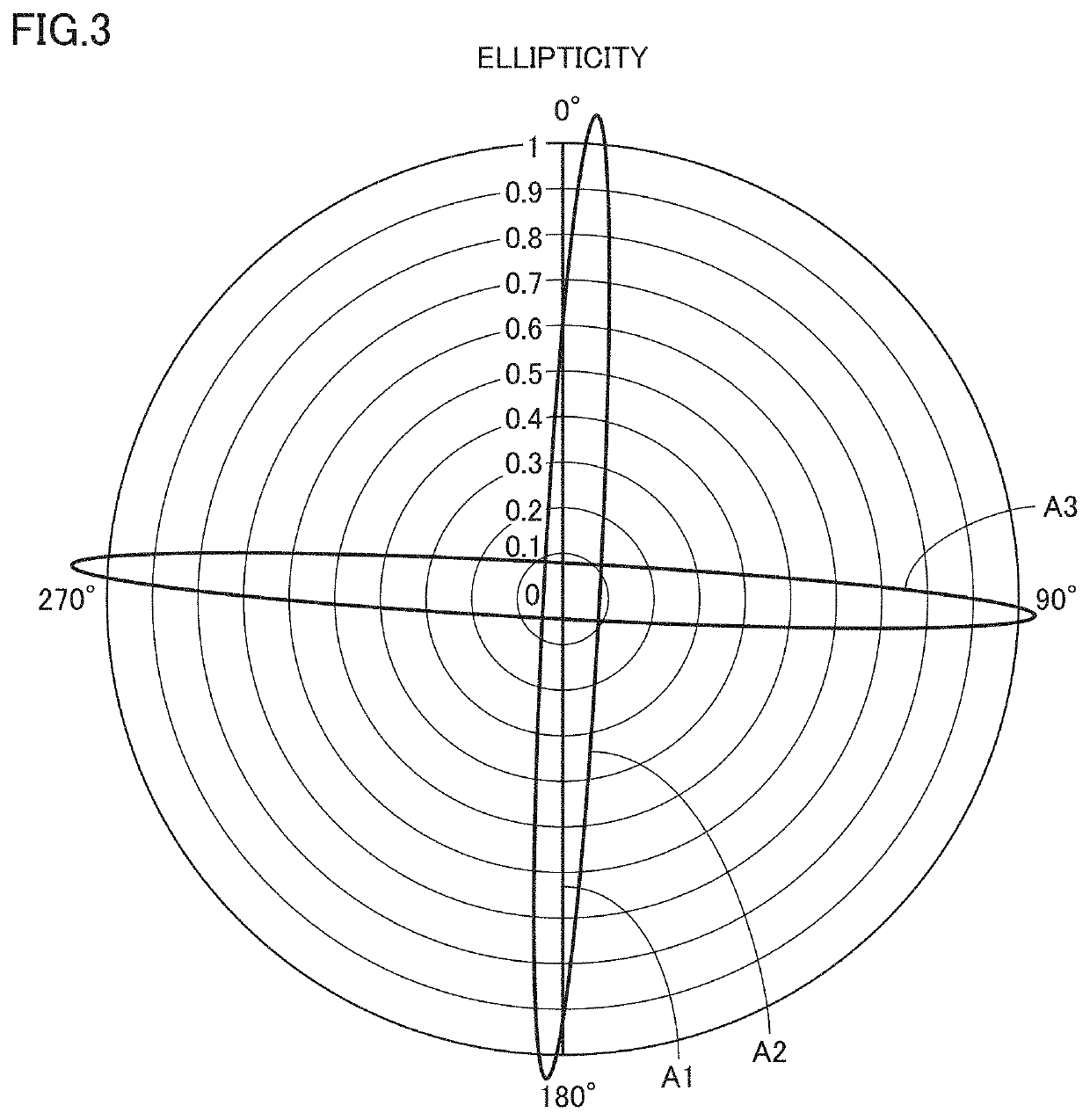Monitoring Apparatus
a technology of monitoring apparatus and monitoring device, which is applied in the field of monitoring apparatus, can solve problems such as adversely affecting image processing, and achieve the effect of stable monitoring result and suppressing the signal level of image processing
- Summary
- Abstract
- Description
- Claims
- Application Information
AI Technical Summary
Benefits of technology
Problems solved by technology
Method used
Image
Examples
first embodiment
[0033]FIG. 4 is a flowchart for illustrating processing performed by the controller of the monitoring apparatus in a first embodiment. Controller 100 in FIG. 2 performs processing for removing a linear polarization component in a wavelength range of near infrared rays, of a virtual image created by reflection or scattering of sunlight in accordance with the flowchart in FIG. 4.
[0034]In steps S101 to S103, controller 100 determines an angle of rotation θ of polarization filter 10 on the camera side so as to minimize a quantity of light that enters the camera by reflection or scattering of sunlight initially with the LED being turned off. Thereafter, in steps S104 to S107, a relative angle α between two polarization filters is finely adjusted to obtain an image high in contrast with all LEDs being turned on.
[0035]Initially, in order to set polarization filter 10 on the camera side, controller 100 turns on the light quantity sensor in step S101. Then, in step S102, controller 100 contr...
second embodiment
[0045]Though a method of suppressing a virtual image by using light quantity sensor 12 is shown in the first embodiment, limitation thereto is not intended. A virtual image may also be suppressed only based on contrast of an image without using a light quantity sensor, as in a second embodiment described below.
[0046]In the second embodiment, relative angle a between first polarization filter 10 and second polarization filter 11 is initially set to 90°, angle of rotation θ at which a minimum value of unnecessary light is achieved is searched for, and relative angle α is finely adjusted based on contrast of an image after angle θ is determined. In the second embodiment, an effect of decrease in time period until completion of adjustment of an angle and an effect of obviating mirror 13 and light quantity sensor 12 are obtained.
[0047]FIG. 5 is a flowchart for illustrating processing performed by the controller of the monitoring apparatus in the second embodiment.
[0048]Referring to FIGS....
third embodiment
[0059]Though a method of suppressing a virtual image is shown in the first and second embodiments, limitation thereto is not intended. A specific approach to decrease in time period for adjustment of an angle will be described in a third embodiment.
[0060]A normal near infrared LED emits light without polarization. LEDs are individually different in angle at which intensity of light that can pass through a polarization filter is maximized. Therefore, depending on accuracy in assembly at the time of manufacturing and a lot of LEDs, intensity of light that can pass through the polarization filter is disadvantageously lowered and a signal level for image processing is lowered. In order to solve this problem, in the third embodiment, a relative angle between first polarization filter 10 and second polarization filter 11 is set to 0°, an angle of rotation β at which a quantity of light in accordance with a characteristic of an individual LED is maximized with the LED being turned on is fo...
PUM
| Property | Measurement | Unit |
|---|---|---|
| angle | aaaaa | aaaaa |
| angle | aaaaa | aaaaa |
| angles | aaaaa | aaaaa |
Abstract
Description
Claims
Application Information
 Login to View More
Login to View More - R&D
- Intellectual Property
- Life Sciences
- Materials
- Tech Scout
- Unparalleled Data Quality
- Higher Quality Content
- 60% Fewer Hallucinations
Browse by: Latest US Patents, China's latest patents, Technical Efficacy Thesaurus, Application Domain, Technology Topic, Popular Technical Reports.
© 2025 PatSnap. All rights reserved.Legal|Privacy policy|Modern Slavery Act Transparency Statement|Sitemap|About US| Contact US: help@patsnap.com



